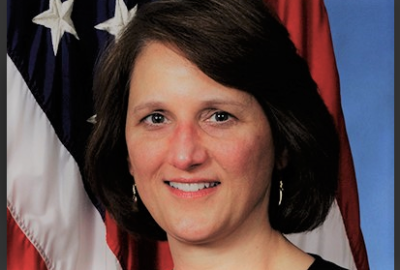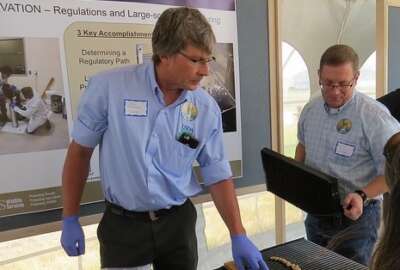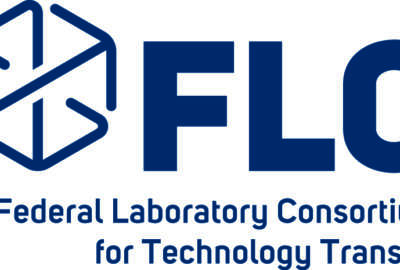Federal labs consortium director has to manage dozens of agency engineers
It's one thing to work on your own as an engineer, but leading a team of engineers is something else entirely.
Best listening experience is on Chrome, Firefox or Safari. Subscribe to Federal Drive’s daily audio interviews on Apple Podcasts or PodcastOne.
It’s one thing to work on your own as an engineer, but leading a team of engineers is something else entirely. But what about running a consortium of executives from dozens of agencies, all with ideas about how to do a single function? That’s what Paul Zielinski has done for about the last year and a half. For the third installment in our tech transfer series, the Federal Laboratory Consortium executive director joined Federal Drive with Tom Temin.
Interview transcript:
Tom Temin: Paul, good to have you on.
Paul Zielinski: Hi, good morning. Thank you very much for having me.
Tom Temin: And do you sometimes feel like you are herding cats in running this consortium of executives involved with tech transfer from dozens of agencies – right?
Paul Zielinski: Oh, absolutely, yeah. And that’s really an interesting challenge within the US government. As I like to describe it, if you think about a wall, when you think of each agency with their independent abilities, knowledge, mission, and all those other things, if you think of those as the bricks, they’re actually the mass of this, but we kind of are the mortar that holds all this together, and makes it really a functional unit as a whole. Because if you’re from the outside looking in at the government, you don’t really care which agency is which, and you may not understand that whole thing. But coming into one place and being able to tap into the network is what it’s really all about.
Tom Temin: Sure. And you were an engineer for quite a while, I guess, at the EPA, and so on. So tell us a little bit about your own career and how you ended up as the executive director of this consortium.
Paul Zielinski: Great. It’s a great question. We always kind of joke about some of that within the tech transfer community, it’s sort of this place where you end up because you have this interest in technology. So as you say, I mean, I’ve had kind of a winding career of a couple different agencies, starting in the military. I was active duty with the US Army, got deployed all over the place, kind of an exciting thing to do. But then I went into the civilian side of the government working at the Department of Energy, primarily working in environmental cleanup, actually, for the Department of Energy complex. The interesting thing about that was actually we didn’t have the technology to do the work. And so it was required that we worked with the science engineers, and really developed new technologies, even to tackle the challenges that we had. So that was really where I got into this whole technology piece. Moving on over to the Environmental Protection Agency, as you can imagine that was a huge jump from working on environmental work. But again, just working on that deployment of technology across all the different EPA sectors, and then eventually ending up in the Department of Commerce with the National Institute of Standards and Technology, which actually coordinates this function on the government side of things across the different government agencies – and in fact, as our host agency.
Tom Temin: Right, and that’s what we should point out to that the consortium is not just a trade group, or an interest group or some kind of a professional association. It is a functioning congressionally chartered agency that has a specific job to do of getting that technology transfer accomplished – correct?
Paul Zielinski: Oh, absolutely, yeah. So in the Federal Technology Transfer Act of 1986, they actually have a line in there that there will be a Federal Lab Consortium, and the members are the federal laboratories. And so as you know, it is something that Congress put into place. And it’s also one of those things that the laboratories are members of kind of whether they like it or not, that is by statute.
Tom Temin: And being an engineer in the federal government, or a researcher or scientific researcher of some sort, someone in the activity of creating intellectual property, what’s your sense of whether that function is all that different in the government versus working in the private sector?
Paul Zielinski: In a lot of ways, it’s not really – and that’s sort of the point of many of the tech transfer laws is actually to try to make the government development process much more accessible and understandable by industry partners. And that’s really, when you get down to many of the different ways that we do these things is a matter of trying to make it accessible to companies and the businesses that are actually deployed these products. There are differences, however, and of course, you know, being a federal employee is very different than being a civilian, if you will. And I think one of the attorneys I work with, I think, summed it up best with it is that you know, it’s a free country, you can do whatever you want. That’s not illegal. But if you’re a government employee, you can only do what you’re authorized to do. Of course that has a big impact on what it is we do.
Tom Temin: We’re speaking with Paul Zielinski. He’s executive director of the Federal labs Consortium. And now you’ve been there about a year and a half, but the techniques and strategies that people use to do the technology transfer, each agency has that function. Is it fairly uniform, from agency lab to agency lab? And does the consortium try to bring more uniformity to it?
Paul Zielinski: Right. So it is relatively uniform, we do operate under the same general guidelines and laws across all agencies. I mean, they do broadly apply, and they can use those things that we have as tools. So they’re available to all of the different agencies. Now, some agencies do have some special extra authorities that aren’t consistent, but for the most part, the general base practices are available to all the agencies to use. And again, when you think about some of these other things that agencies can do, they’re more enhancements that they are rather than something less than, so it’s always more greater than they are essentially. And these are really new things either they’ve been around for a while, and they’re pretty consistent.
Tom Temin: Now the members of the consortium have their own full time jobs at their respective agencies, you’ve got a board that revolves from time to time, and we’ve got the other new officers coming on also. What is the day to day role of being executive director?
Paul Zielinski: Well, as you know, everybody who works on the consortium in terms of the membership, I mean, the elected members. So we have a chair that’s from the Navy, we have a vice chair from the NSA, we have folks who are different officers are from different agencies, and they all have a full time job. So none of them are dedicated to working on this task. And that’s really where we come in staffing this function. So I lead that staff function to make sure that we’re operational. We have our big areas, we call promote, educate and facilitate. So we make sure people know that these things are available, that they’re things that businesses can use to enhance economic development, we actually provide education for the profession of technology transfer, how government employees or laboratory employees actually perform their function and their job in a consistent way. And then we actually then facilitate trying to make availability of some of the technologies with companies and setting up the possibility of these transactions taking place as we enhance that ability.
Tom Temin: I was gonna ask, you must do a lot of outreach to industry so that it knows what is available to its economic development and its business development plans, that this federal intellectual property is there for licensing?
Paul Zielinski: Oh, absolutely. And it’s one of those things where you start to think that I’ve said this so many times, but every single time I go to a new place, I meet new businesses that really aren’t aware of the different possibilities. And when you think about our complex, sort of this unlimited pool, it almost seems like just the ability to work with federal agencies, and of course, businesses, and there’s always new startups coming on board. And that’s always sort of an interesting thing as well as just sort of informing them of the possibilities that exists in partnering with some of these agencies.
Tom Temin: What’s your sense of how licensing from the government differs and maybe more advantageous, say, than company to company licensing?
Paul Zielinski: Sure, well, I think there’s this bedrock principle that’s put into the wall. So there’s the Bayh–Dole Act , which was actually passed in 1980, that gives us our orders from Congress, in terms of what we’re supposed to do for licensing. And the whole goal of that act was actually what they call practical application. That is, how is someone going to actually use it, we don’t want to license it off for someone to actually say this is better than the product, we’re going to license it, we’re going to put it on the shelf. In fact, the licensing is used in order to advance product development. So there’s something that you will or me could buy, because that’s the only way you get access to this technology. I mean, if you really think about it, the government doesn’t manufacture things that you buy. When you think about even something as simple as the COVID vaccines we’re all talking about, you’re not getting a US government vaccine, you’re getting it from a company. So there’s a company that must be in that intermediary, they’re gonna make/sell/distribute products. And so the whole trick is getting it from the research bench that out into the marketplace. And that’s where we focus.
Tom Temin: And is it enjoyable work that you do?
Paul Zielinski: Oh, it’s fascinating work. Because there’s always something different. As I said, we work with every agency. And so if you think of the full breadth of research and development in the United States government, you really kind of get into everything and anything. And so there’s always some sort of a new twist, something new, exciting, that’s coming up, some new technology, you think about the fascinating technologies that come out of all these research projects. There’s always something new going on. And I think that’s actually what makes it interesting. And then, of course, there’s always the new businesses that are coming up. And they’re trying new business practices and trying to launch new exciting things, products. And so that that actually makes the work really kind of interesting and always sort of on the cutting edge as well.
Tom Temin: Paul Zielinski is executive director of the Federal Labs Consortium. Thanks so much for joining me.
Paul Zielinski: Oh, my pleasure.
Tom Temin: Tomorrow, we wind up with another executive director of the University of Montana’s Tech Link Center that gives operational support to many agencies transfer activities.
Copyright © 2024 Federal News Network. All rights reserved. This website is not intended for users located within the European Economic Area.
Tom Temin is host of the Federal Drive and has been providing insight on federal technology and management issues for more than 30 years.
Follow @tteminWFED






